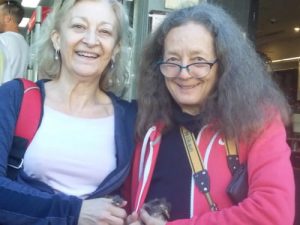Glebe’s 7th spring bird survey – report from Judy Christie
This year’s annual bird survey took place on Sunday 20 October in cool, sunny conditions with 17 people meeting in Paddy Gray Reserve at 6.45 am to sign on and be allocated sites. A total of 9 teams set out to survey sites across Glebe and Forest Lodge, spending around 20 to 45 minutes surveying the birdlife in streets, parks and waterways.

More individual birds were seen in the 2019 survey but over half of the 620 birds seen were the two most common birds seen in other national surveys – the Noisy Miner and the Rainbow Lorikeet. These native species are the great ‘urban adapters’ that have moved into cities in the last 20 years and continue to increase their numbers, and in the case of the Noisy Miner actively exclude other birds, especially small birds, from their territories. This year’s survey also noted an almost doubling of the number of Australian Magpies, which have expanded from parks into streets, lanes and backyards and are breeding locally.
There were fewer species seen this year, only 27 species compared to 30 in 2018, with several of our usual regulars like the Willie Wagtail and Magpie-Lark (Pee-wee) not sighted during the surveys. However, Glebe waterways continue to provide habitat for Striated Heron and White-faced Heron – now seen on most surveys. Surprises this year included a mysterious ‘little brown bird’ in John St Reserve Habitat Garden that may have been a Brown Thornbill, with one photographed in Redfern several days earlier. As our survey teams returned for breakfast at Esca there was excitement as the St Johns Rd team brought back with them two Red Wattlebird nestlings, found on the footpath, in all likelihood removed from their nest in response to an Eastern Koel looking to lay eggs in the Red Wattlebird nest. The nestlings were later handed over to WIRES for caring.
Our annual survey once again provided a useful snapshot of the local birdlife, though not surprisingly, given the loss of surrounding suitable habitat due to road and building construction, no Superb Fairy-Wrens were seen or heard. However, several of the participants continued to do 20 minutes surveys the following week as part of the Aussie Backyard Bird Count. Finally, after a week of surveys, two Willie Wagtails were seen again in their usual place near the Tramsheds.
Thank you to all volunteers who helped to make this a very successful and enjoyable spring morning.
Andrew Wood
Convenor, Blue Wren Subcommittee










There are no comments yet. Please leave yours.